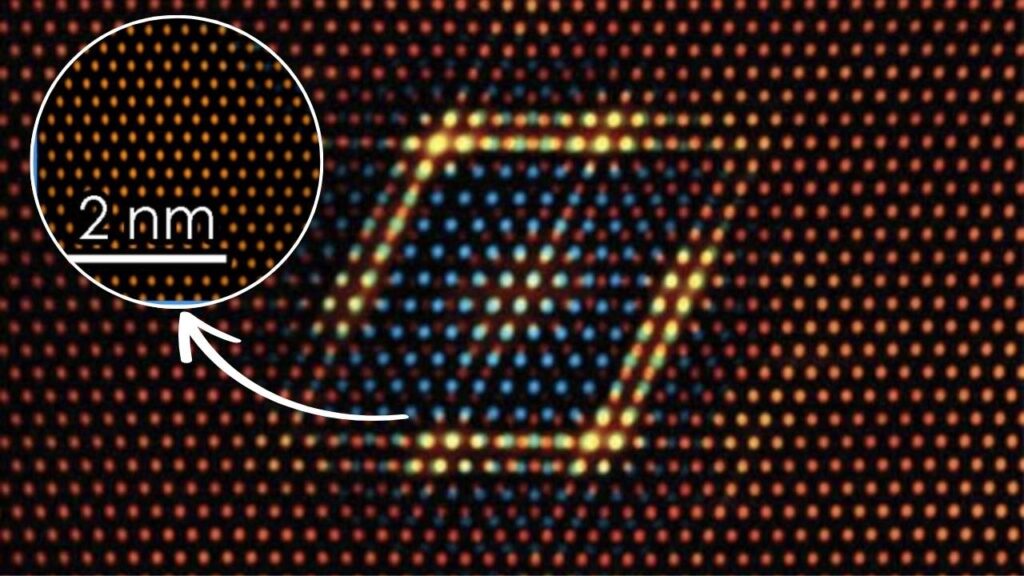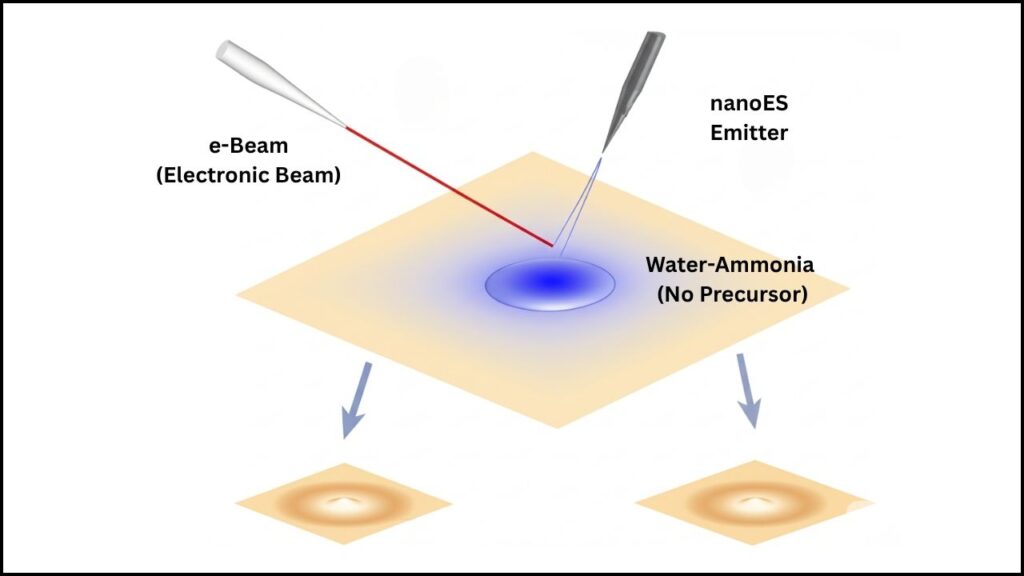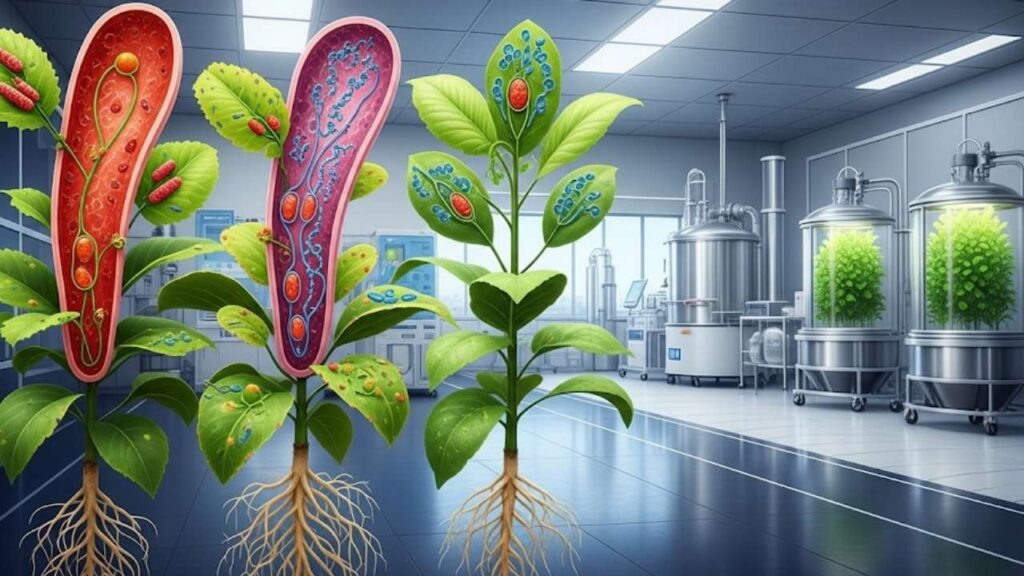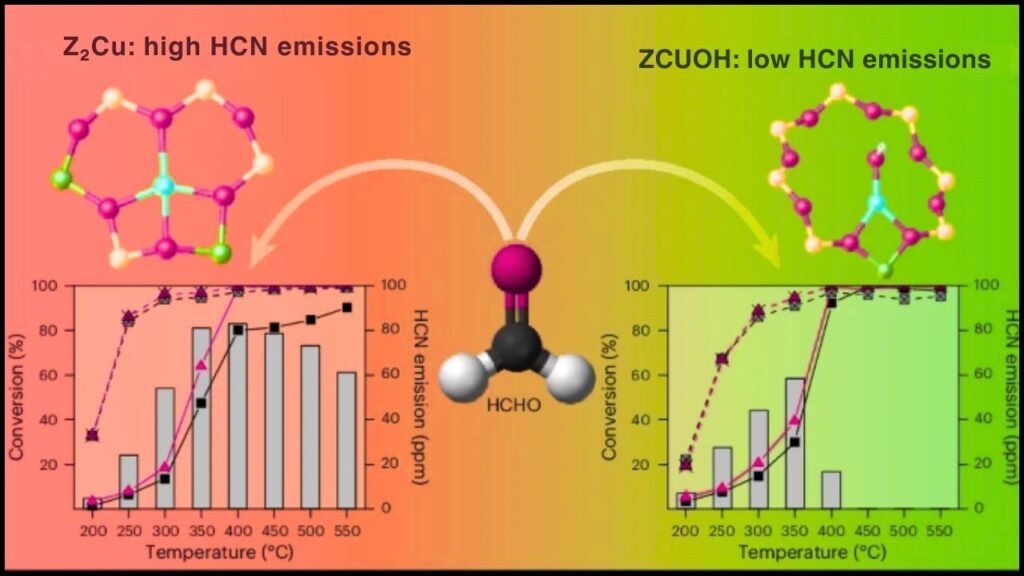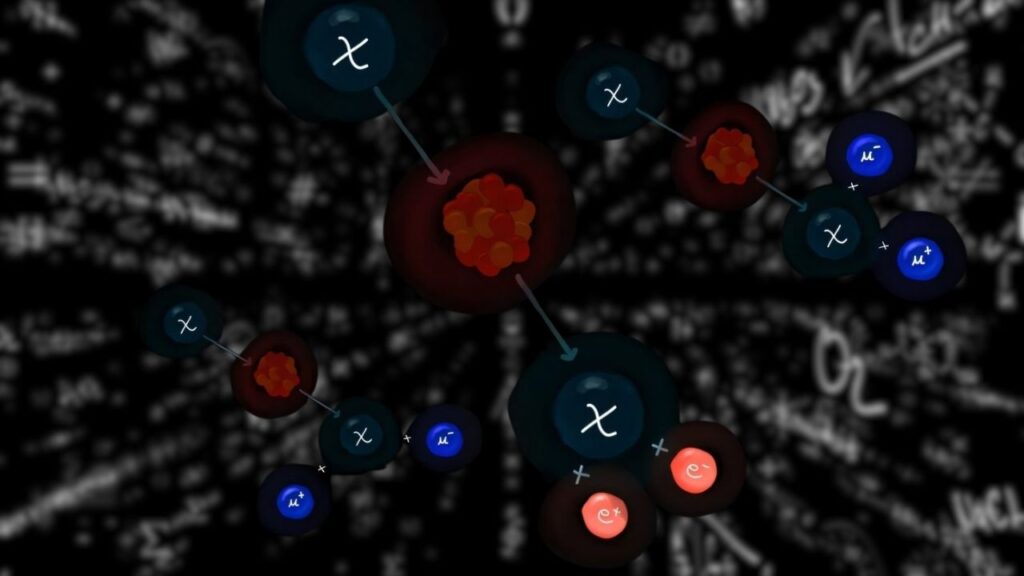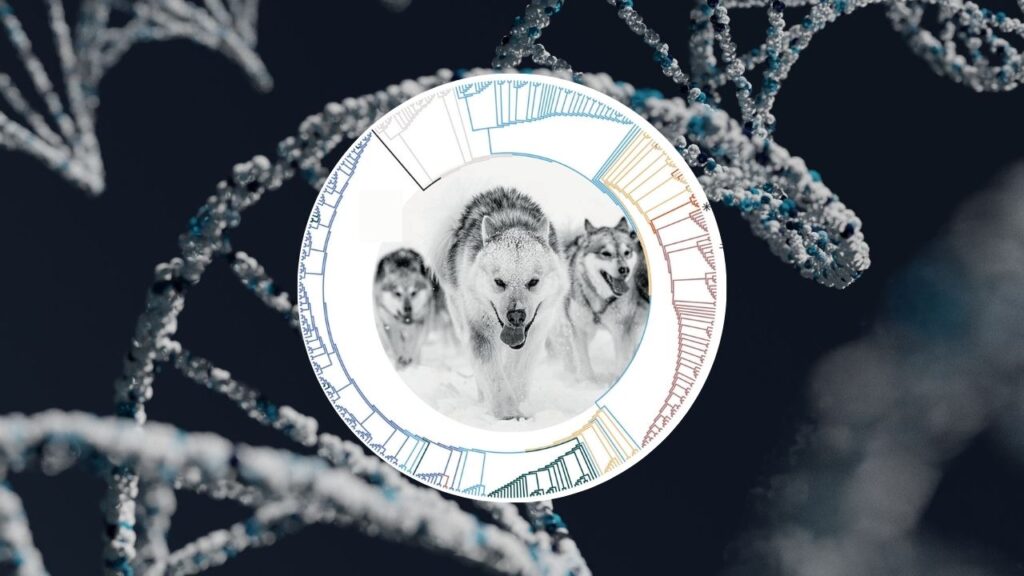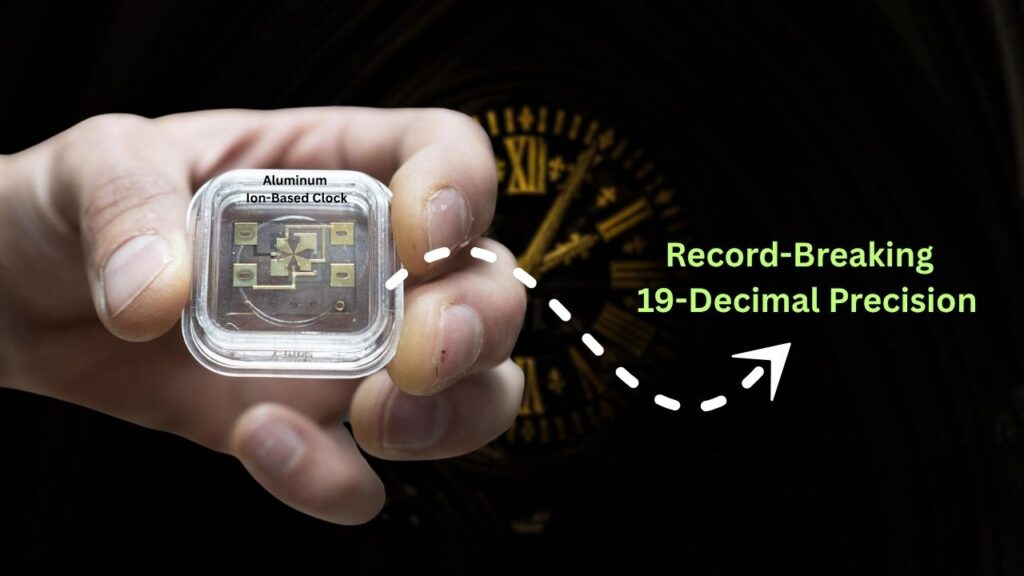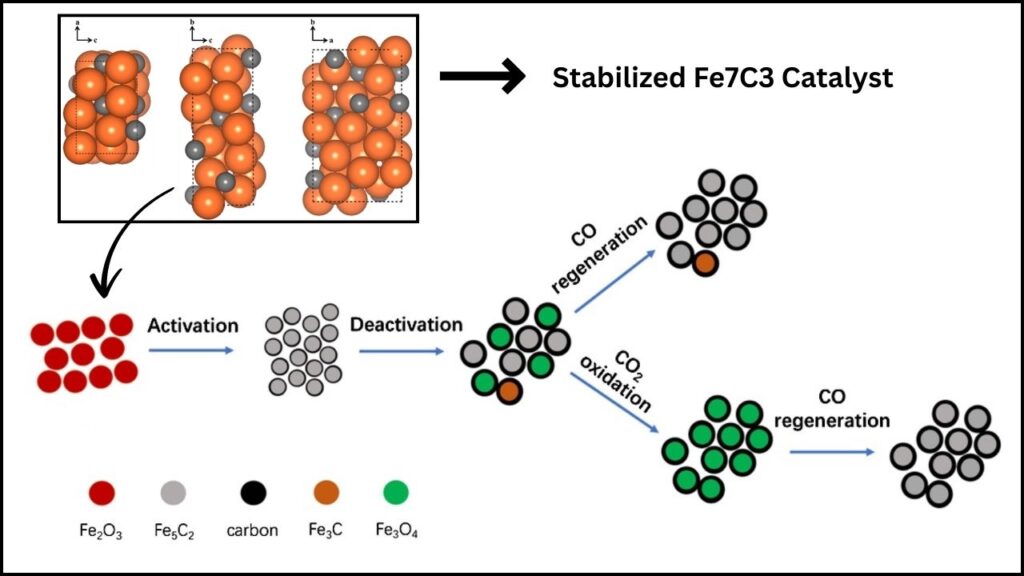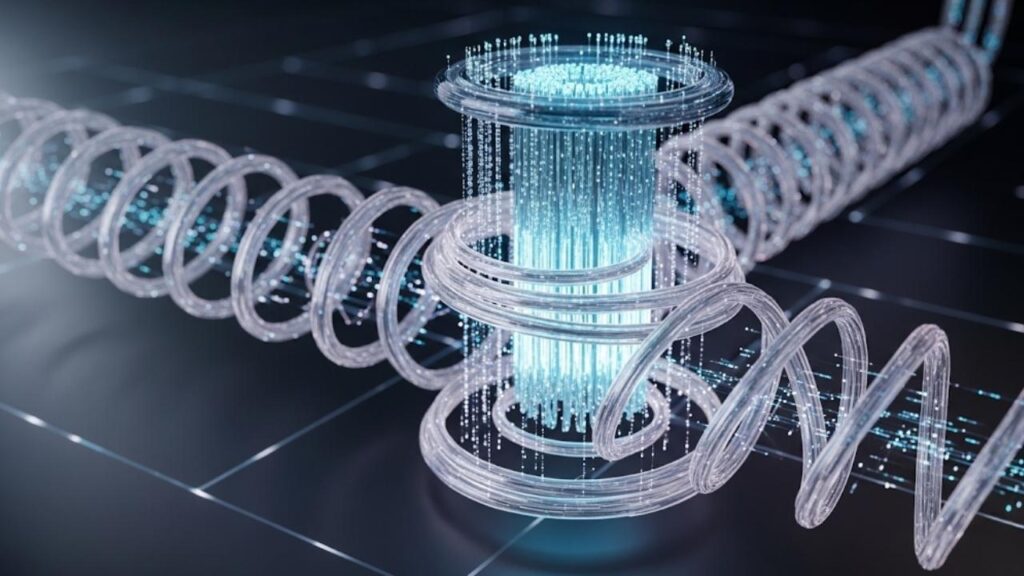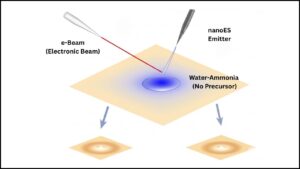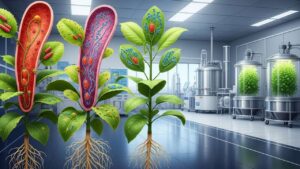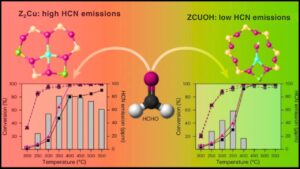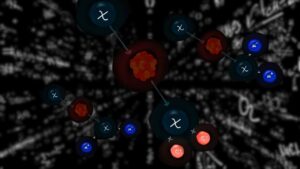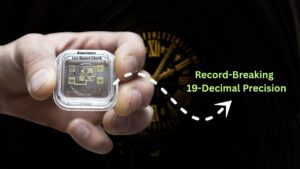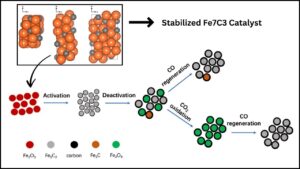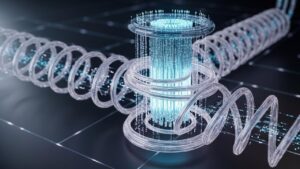Oxygen production in space has taken a giant leap forward thanks to a groundbreaking discovery: scientists have developed a method to produce oxygen using magnets. This new technique promises to simplify and enhance life-support systems aboard spacecraft, providing a sustainable solution critical for long-duration missions beyond Earth. For many, understanding how oxygen can be produced in space using magnets might sound complicated, but this article will break it down in a friendly, easy-to-understand way while offering professional insights for space enthusiasts and experts.
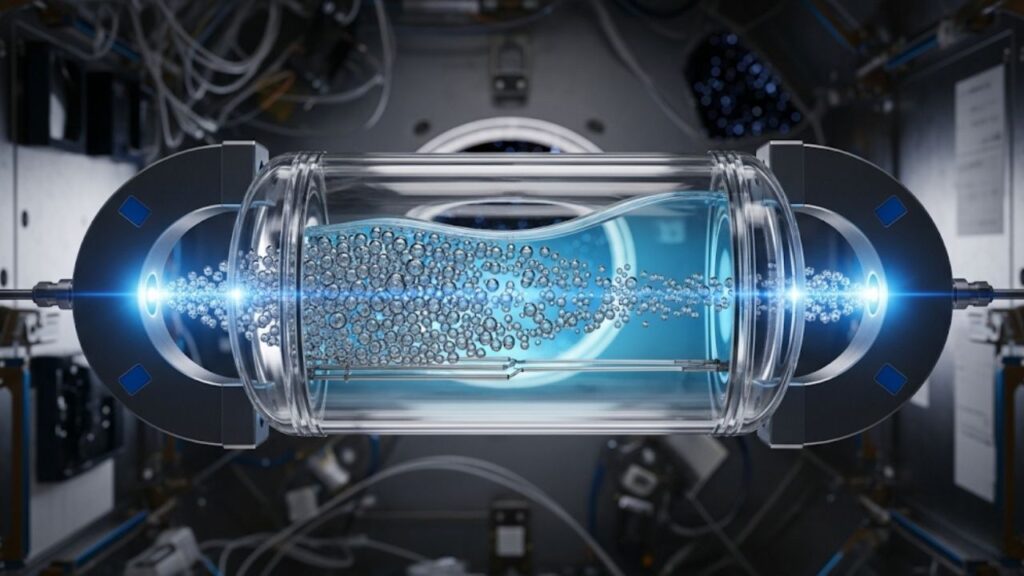
Producing oxygen is essential for astronauts as they explore deeper into space. The traditional systems used today involve complex, heavy machinery that consume significant energy and require constant maintenance. This new magnetic method could change the game by making oxygen production lighter, more efficient, and less demanding to operate. Let’s dive into this exciting innovation and explore how it works, why it’s important, and what it means for the future of space missions.
Table of Contents
Scientists Discover a New Way to Produce Oxygen Using Magnets
| Aspect | Details |
|---|---|
| Innovation | Magnetic forces used to separate oxygen bubbles from water during electrolysis in microgravity |
| Efficiency Improvement | Up to 240% increase in oxygen collection efficiency compared to traditional methods |
| System Benefits | Lightweight, low-maintenance, no moving parts, and requires no additional power |
| Research Teams | Georgia Tech, University of Warwick, ZARM at Bremen |
| Key Scientific Principles | Diamagnetism and magnetohydrodynamics |
| Test Environment | Simulated microgravity in drop towers and laboratory experiments |
| Potential Applications | Space missions to the International Space Station, Mars transit, and deep space exploration |
| Published In | Nature Chemistry (2025) |
| Official Source | Georgia Institute of Technology – Aerospace Research |
The discovery of using magnets to produce oxygen in space marks a monumental advancement for human spaceflight. It solves one of the biggest problems in life-support systems by simplifying oxygen production in the challenging environment of microgravity. This innovative technique offers a lightweight, reliable, energy-efficient, and maintainable alternative to current complex mechanical systems, paving the way for longer, safer missions to distant worlds.
As space agencies and private companies push for extended human presence beyond Earth, this magnetic oxygen production method stands poised to become a vital cornerstone of sustainable life-support technology.
Why Oxygen Production Matters in Space
In space, having a reliable source of oxygen is non-negotiable for astronauts’ survival. Spacecraft orbiting Earth, such as the International Space Station (ISS), regularly replenish oxygen supplies from Earth. But when missions extend to distant destinations like Mars, constant resupply is impractical. This means that the spacecraft have to generate oxygen onboard by splitting water molecules into oxygen and hydrogen—a process called electrolysis.
Normally, on Earth, gas bubbles produced during electrolysis rise to the surface due to gravity, allowing easy separation from water. However, in microgravity environments like space, there’s no buoyancy, so oxygen bubbles tend to stick to the electrodes, making the separation process difficult and inefficient. This is a critical problem that adds significant complexity and weight to space life-support systems.
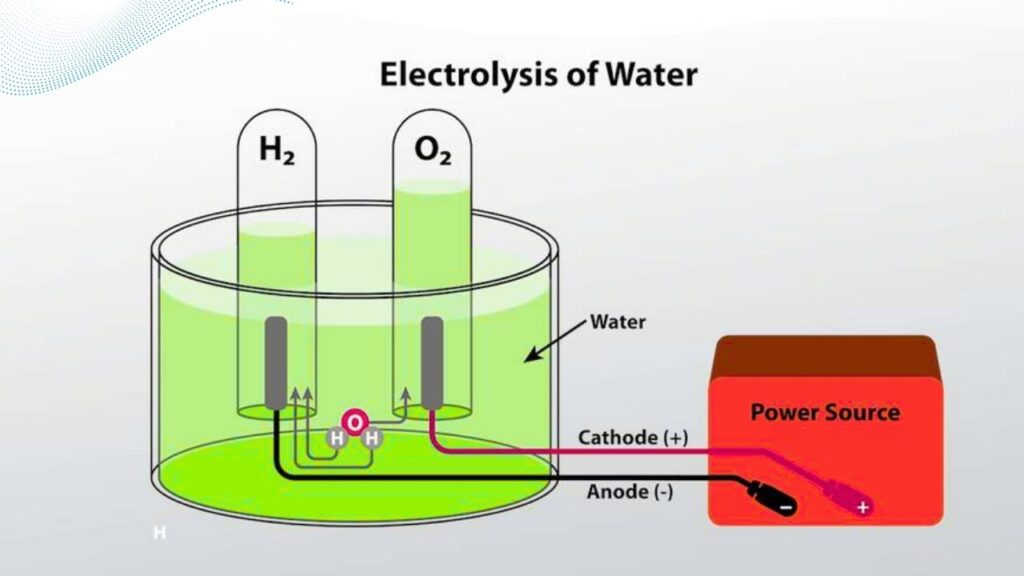
Current Oxygen Production Techniques and Their Challenges
The prevalent system aboard the ISS is the Oxygen Generation Assembly (OGA), which splits water into oxygen and hydrogen. To separate the gases from water, it uses a centrifuge, spinning the water to pull apart gas bubbles by centrifugal force. While effective, this system is:
- Heavy and bulky: The centrifuge requires mechanical components that add weight and increase potential failure points.
- Energy-intensive: It consumes significant electrical power, a precious commodity in space.
- Complex maintenance: Astronauts must constantly monitor and repair the machinery to ensure reliable operation.
For missions like a manned flight to Mars, simpler and more reliable systems are needed to reduce spacecraft weight, power consumption, and maintenance time.
The Magnetic Solution: How Does It Work?
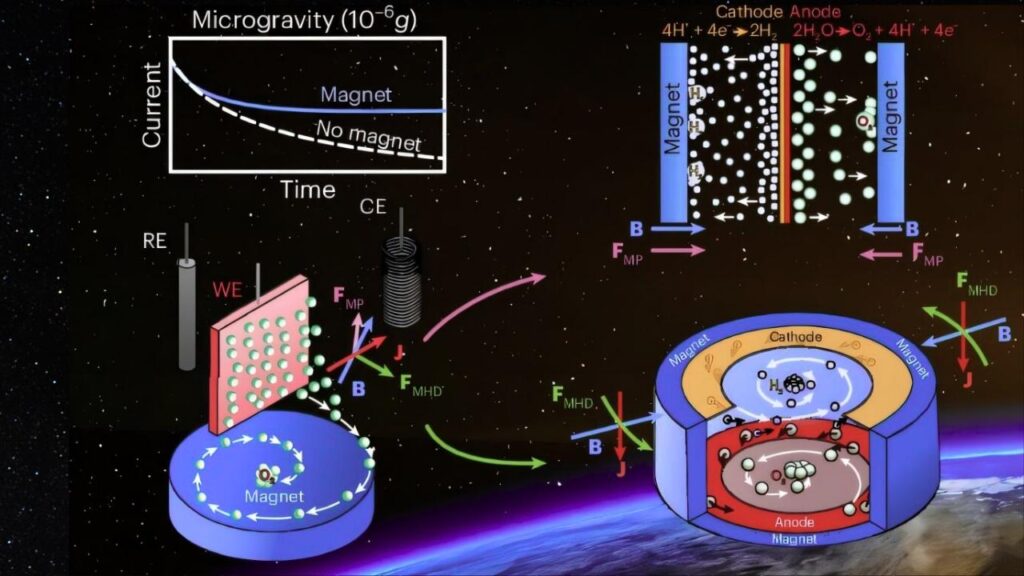
An international team of scientists from the Georgia Institute of Technology, the University of Warwick, and ZARM at the University of Bremen has pioneered a novel, simpler method relying on magnetic forces to achieve the gas-water separation needed for oxygen production, avoiding the pitfalls of mechanical centrifuges altogether.
Key Scientific Principles Behind This Innovation
- Diamagnetism: This property makes oxygen bubbles in water react to magnetic fields, allowing the attraction or repulsion of bubbles without physical movement.
- Magnetohydrodynamics (MHD): When magnetic fields interact with the electric currents generated during electrolysis, they create fluid motion that helps push bubbles away from electrodes.
By placing small, commercially available magnets near the electrodes, the magnetic forces guide oxygen bubbles off the surface, collecting them efficiently without any moving parts or added energy input. This process mimics the effect of the centrifuge but in a much simpler, lighter, and passive way.
Breaking Down the Process in Space
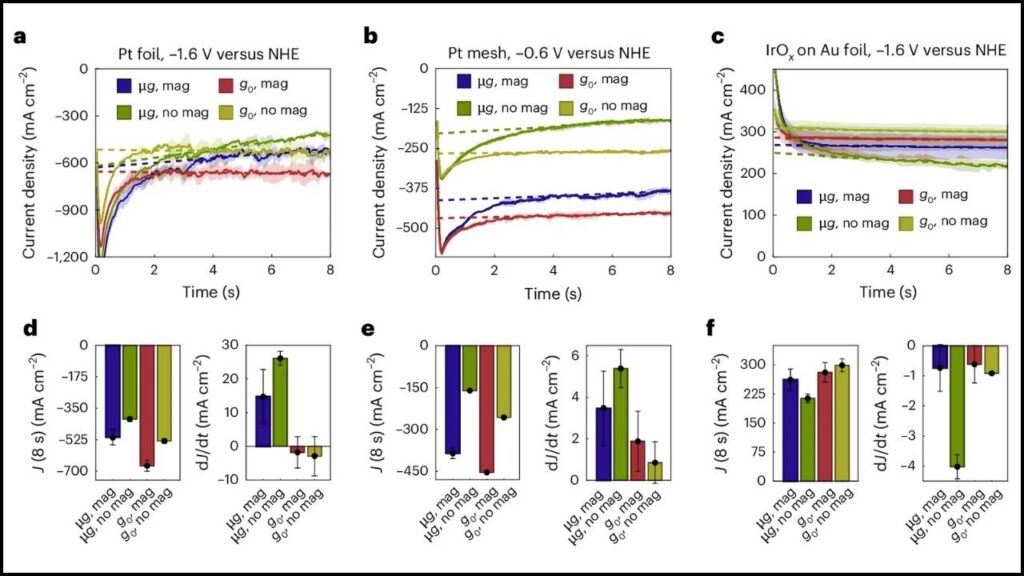
- Water electrolysis: An electric current from the spacecraft’s power splits water molecules into oxygen and hydrogen gas at electrodes submerged in an electrolyte solution.
- Bubble formation: Oxygen bubbles form at the electrodes but do not rise due to absence of gravity.
- Magnetic separation: Magnets placed near the electrodes exert forces on the bubbles, pushing them away from the water interface passively.
- Oxygen collection: The separated oxygen bubbles are collected in designated spots, ready for astronaut use.
Researchers tested this innovative system in Bremen’s 146-meter-tall drop tower, which provides about 9 seconds of microgravity to simulate space conditions. The results showed a remarkable 240% increase in the efficiency of oxygen bubble separation compared to traditional methods without magnets.
Why This Breakthrough Is a Game Changer for Space Exploration
- Lightweight and compact design: No need for heavy centrifuges or complex fluid management systems.
- Low maintenance: Absence of mechanical parts reduces the risk of malfunctions.
- Energy-efficient: Operates passively, requiring no extra power beyond electrolysis.
- Improved reliability: Boosts oxygen production efficiency, crucial for prolonged missions.
- Scalability: Could be adapted for various spacecraft designs and mission durations.
This advancement will be crucial for upcoming deep-space human missions, including planned trips to Mars, where resources, weight, and energy economy are paramount.
Practical Advice for Implementing This Technology
For aerospace engineers and mission planners interested in integrating this technology:
- Collaborate with magnetics specialists: Understanding the behavior of magnetic fields at microgravity is key.
- Test extensively under simulated microgravity conditions: Facilities like the ZARM drop tower or parabolic flight can validate performance.
- Consider spacecraft integration early: Design electrolysis systems and bubble collection areas optimized for magnetic separation.
- Plan for redundancy: Combine magnetic methods with other oxygen production techniques for added safety.
- Monitor magnetic field strength: Ensure magnets are strong enough to influence bubble movement without interference from other onboard systems.
This Tiny Iron Catalyst Could Revolutionize the Future of Clean Energy
Breakthrough Molecule With Four Charges Could Supercharge Artificial Photosynthesis
FAQs About Scientists Discover a New Way to Produce Oxygen Using Magnets
Q1: Why can’t traditional gravity-based bubble separation work in space?
In microgravity, bubbles don’t rise because there’s no buoyant force. Instead, they stick to surfaces like electrodes, hindering efficient oxygen collection.
Q2: What types of magnets are used in this system?
Researchers used off-the-shelf permanent magnets, such as neodymium magnets, chosen for their strong magnetic fields relative to size.
Q3: Is the magnetic method already used aboard the ISS?
Not yet. It is currently in experimental stages but has shown promising test results that could lead to future adoption.
Q4: Can this technology be applied on Earth?
Yes, but since gravity already helps separate bubbles on Earth, the biggest benefits are in microgravity environments.
Q5: How much oxygen can the system produce?
Oxygen production depends on the electrolysis rate, but the magnetic system improves collection efficiency by up to 240%, meaning more oxygen from the same amount of water.
